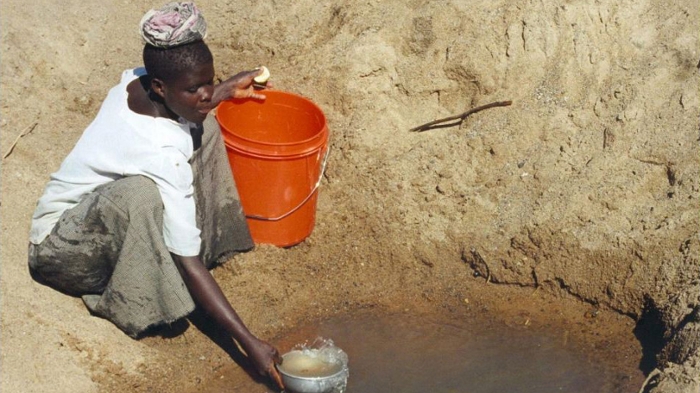IPR Anthropologist Receives Grant to Measure Water Insecurity
International research team to develop cross-cultural water measurement scale
Get all our news

Water insecurity often disproportionately affects women, who bear the burden of water collection and water-intensive chores in developing countries. In a new project, IPR anthropologist Sera Young will work to pinpoint how water insecurity affects the most vulnerable populations.
Though an estimated two billion people drink unsafe water around the globe, there are currently no methods to precisely measure how many people are affected by not having enough water for all aspects of their daily lives.
This lack of measurement makes it difficult to pinpoint effective interventions to improve water insecurity and water-related illnesses. To better measure water insecurity, researchers need to assess whether people have reliable access to water in sufficient quality and quantity for all activities.
Under a new £250,000 (approximately $310,000) grant from the U.K.-funded Innovative Metrics and Methods for Agriculture and Nutrition Actions (IMMANA) research initiative, Northwestern University anthropologist Sera Young, a fellow in the University's Institute for Policy Research, and an international team of researchers seek to develop a cross-cultural scale of perceived household water insecurity. IMMANA is supported by UK Aid from the British government's Department for International Development.
"We are so excited to be working towards the creation of a scale that can finally measure how water insecurity affects people at the household level—that is, the food people grow, their economic well-being, and, of course, their health," Young said.
Additional investigators include Wendy Jepson, a human geographer at Texas A&M University; Amber Wutich, an anthropologist at Arizona State University's (ASU) School of Human Evolution and Social Change; Phelgona Otieno, a pediatrician at Kenya Medical Research Institute; Sheri Weiser and Craig Cohen, physician researchers at the University of California San Francisco; and Lisa Butler, an epidemiologist at the University of Connecticut. The grant is administered by the London School of Hygiene & Tropical Medicine.
Young and her co-investigators posit household water insecurity leads to poorer mental and physical health and lower economic productivity, but in ways distinct from food insecurity—including increased anxiety, stress, and time/energy expenditure, as well as decreased agricultural production.
Though water insecurity likely contributes to adverse consequences for all household members, it often disproportionately affects women, as they bear the burden of water collection and water—intensive chores in developing countries. For instance, because women in water-insecure communities often need to walk long distances to collect water, they might not have time to care for their children. Preliminary data have shown that many women worry about their physical safety while fetching water, and that anxiety about how they will obtain all the water needed for their daily activities is common.
Infectious diseases are another possible effect of water insecurity. In Young's work in Kenya, about 31 percent of women reported being unable to wash their hands after contact with feces, and one-third said they drank unsafe water "sometimes" or "often."
The researchers will refine the household water-insecurity scale, using cross-cultural research conducted in at least six countries. ASU faculty and students will lead projects in Bangladesh, Guatemala, Nepal, and Tajikistan, and Texas A&M University faculty and students will do the same in Brazil and Costa Rica.
After completing the first round of data collection research, the experts will meet in August at Northwestern University to work on refining an open-access manual that will describe the scale and methods.
"This scale will be an important first step in pinpointing how water insecurity impacts some of the most vulnerable populations, including pregnant women, mothers with young children and HIV-infected adults," Young said.
The research team hopes this will result in a better understanding of household water insecurity and point to new strategies for intervention. They also aim to help direct limited resources to targeting the causes of water insecurity and the people at greatest risk of adverse effects—especially women and their young children.
Sera Young is assistant professor of anthropology and an IPR fellow.
Photo: Wikimedia Commons.
Published: March 28, 2017.